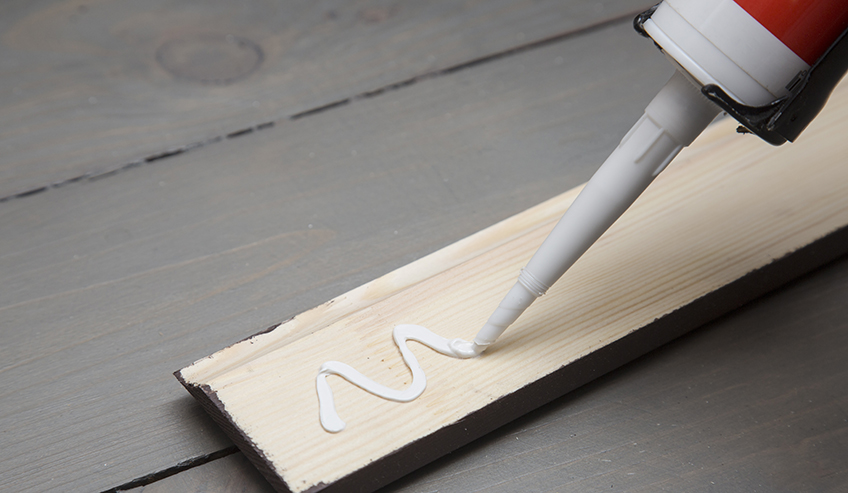
The Glue Talk Blog

Construction is the largest application segment of the moisture cure adhesives market. The high demand for these adhesives in the construction segment can be attributed to their use in a wide range of construction activities, such as flooring, tiling, insulation, roofing, and wall covering.
The growing investments in infrastructure in the Asia-Pacific region, including China and India also are contributing to the rise in the moisture cure adhesive market. According to the National Development and Reform Commission, the Chinese government approved 26 infrastructure projects at an estimated investment of about $142 billion USD in 2019, which are estimated to be completed by 2023. In India, a planned spend of about $1.4 trillion USD in infrastructure over the next five years, including smart cities and “housing for all.”
Automotive is projected to witness the highest growth in the moisture cure adhesives market during in the near term due to the rising, worldwide demand for lightweight and fuel-efficient vehicles. Moisture cure adhesives are widely used in the automotive industry for enhancing the performance of vehicles, developing lightweight designs, and fabricating structure by deploying multi-materials, such as aluminum, glass fiber-reinforced composites, carbon fiber composites, and others. The application of these adhesives has resulted in cost savings, which also acts as a key driver for the use of moisture cure adhesives in the automotive industry.
What are Moisture Cure Adhesives?
The majority of adhesives on the market use waterborne- or solvent-based mixtures that cure when either water or a solvent evaporates. By contrast, moisture cure adhesives uniquely react with moisture in the environment or the underlying layer in order to cure. While this curing process can take days to complete, moisture cure adhesives have unique uses for the bonding and use of construction materials.
What are Moisture Cure Adhesives Used For?
Moisture cure adhesives work well with surfaces that are difficult to bond, such as wood-based materials, untreated metal, or plastics that don’t contain polypropylene or polyethylene. They also function well for insulation panels and exterior applications that may be exposed to temperatures in excess of 100 degrees. Even delicate and thin materials, like plastic panels, glass, and sheet metal fascia, can benefit from moisture curing. They form elastic bonds and seals and are appliedwhere different thermal length expansions require permanent movement compensation.
The Benefits of H.B. Fuller Moisture Cure Adhesives
Beyond working better for challenging surfaces and delicate materials, moisture cure adhesives also can be formulated to meet the specific needs of a product. We offer a line of largely polyurethane-based, silane-terminated polymers and silicone-based products ideal for sealing, bonding, potting, and thermal conductivity, depending on the specific performance you need. Our formulations include benefits like:
- Permanently elastic, vibration-damping
-
Compensate different thermal length expansions
-
Low to high viscosity for optimal application
-
Instant seal
-
Resistance to oils and chemicals
-
Flame retardancy
-
Low to high thermal conductivity
-
Long-term resistance to harsh weather conditions
The H.B. Fuller Difference
We have the specific formulas you need for the best performance across a wide variety of applications. Use our strong, lightweight, long-lasting bonding solutions for the best quality and value in adhesives.
Blog Categories
Blog Categories
Archive
- 2024
- 2023
- 2022
-
2021
- January (3)
-
February (7)
- Celebrating Exceptional Service During COVID-19 Complications
- Cyanoacrylates: What They Are and What They Do
- Innovative two-shot bookbinding adhesive
- Make a Difference 2020
- Problem Solving: Paper Straws in Drinking Beverages
- Stronger straws sustainable future
- Substances of Interest in Disposable Absorbent Hygiene Products
- March (4)
- April (4)
- May (4)
- June (5)
- July (2)
- August (5)
- September (2)
- October (1)
- November (3)
- December (2)
-
2020
- January (4)
- February (2)
- March (3)
- April (4)
- May (3)
-
June (7)
- Community Support in the Era of Coronavirus
- HBFuller Employee Creates Face Shields with 3D Printer
- Improved Packaging Integrity and Greater Customer Satisfaction
- Liquid-Resistant Paper Straws
- What is a Sealant?
- What Is the Future of Commercial Disinfectants?
- Winning over consumers with e-commerce packaging solutions
-
July (6)
- Employees Take Action to be Part of Healing and Growth
- Gain a competitive advantage with packaging adhesive solutions
- HB Fuller Company Foundations Commitment to Communities
- Packaging Solutions for the South African Agriculture Market
- Supporting Organizations That Provide STEM Education for Youth
- Where Does Sustainability Stand Amid COVID-19
- August (3)
- September (2)
- October (4)
- November (2)
- December (4)
